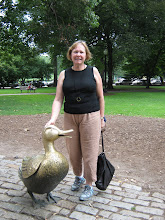I really like this book and was so pleased to see it make the shortlist. While I don't mean to dwell on its contents here (others have already done teaching notes), suffice to say it is not about dung beetles only, but counting all sorts of creepy crawlies. It is a good book as a focus for a display. You have lots of options:
• a display of books featuring all the creatures illustrated in this book.
• a display of beetle books. There are so many really good ones.

• a display of books about dung beetles. There are so many of them and my students do love books about poo.
The CSIRO has produced a book that shows the types of dung beetles we have in Australia. I wasn't aware there were so many here.
Our library has several picture books about dung beetles, including these:
• Behold the Beautiful Dung Beetle by Cheryl Bardoe and Alan MarksSimple science text and dramatic illustrations give a close-up view of the fascinating world of the dung beetle. When an animal lightens its load, dung beetles race to the scene. They battle over, devour, hoard, and lay their eggs in the precious poop. Dung is food, drink, and fuel for new life-as crucial to these beetles as the beetles are to many habitats, including our own.
• Dung Beetle on a Roll by sandra Severgnini
Bigger is not always better. Sometimes the smallest of creatures can have the biggest impact … even with dung!
Explore the fascinating and incredibly important role that tiny dung beetles play in our environment. From pushing dung balls that can weigh up to 50 times more than they do, to recycling nutrients in our soil, these beetles are really quite exceptional!
One beetle's trash is another beetle's treasure! When Babak the little dung beetle finds an egg, he's determined to to find the owner, but he soon finds the mysterious egg doesn't belong to the ostrich, frog or snake. What kind of egg is it?
• Doug the Dung Beetle by Rebecca JohnsonDoug the Dung Beetle has had enough of cattle making fun of his job. He convinces his mates to go on strike and give them a taste of their own medicine, which doesn't turn out well for the c attle.
• The Poo That Grew by Peter Bently and Nick East
Dung beetles love to chew on other animals' tasty poo. But when the monkeys make fun of them for having such a stinky lunch, the beetles decide to munch elsewhere. What the monkeys didn't realise is that without the beetles, there's no one to clean up their business. And so, the pile of poo grew and grew and GREW.
I would like to have one or both of these factual books with photographs:
• Dung Beetles by Martha Rustad
Dung beetles are the world's strongest animals. They are famous for rolling animal poop around. Their gross job is important to the world. Find out more facts about these strong insects.
• A Colony of Dung Beetles by Rebecca Storm
The science behind these curious creatures in a fascinating way bringing to life key topics including life cycles adaptation and the food chain. Discover all sorts of fascinating facts including why dung beetles are so obsessed with dung, how they smell without having noses, what makes dung beetles so strong and much more!
Your library might also have:
Coming later in the year
And this chapter book which is part of a series of books about a young inventor called Sally Tinker.
• Dungzilla by James Foley
Sally has built a machine capable of enlarging any object, but when she tries resizing a slice of pizza she accidentally enlarges a dung beetle to scary proportions. As the hungry beetle rolls itself a dung ball large enough to crush an entire town, Sally races to shrink down the monster, before it’s too late.
If I was reading a dung beetle book as a companion text to my Kindergarten classes, I would read Babak the Beetle because even though there is lots to talk about it will also make them laugh.
My Year 1 students have studied mini beasts and invertebrates this year so I might be more inclined to read Dung Beetle on a Roll which is published by the CSIRO so that we can discuss the information presented.
With Year 2 students, I would introduce them to Sally Tinker and the STINKER series of books by James Foley by reading an extract from Dungzilla and then encourage them to read them independently. Or I would show them I Eat Poop because I don't have a copy, but it is perfect to discuss tone and author purpose.





















No comments:
Post a Comment